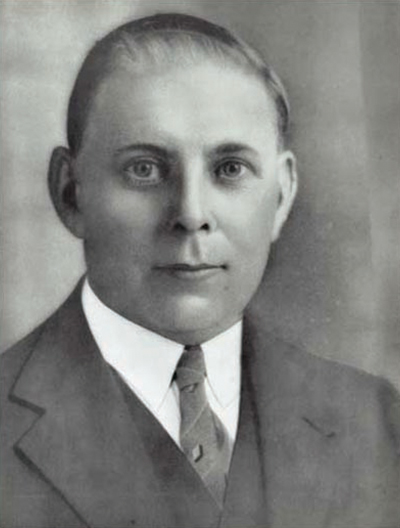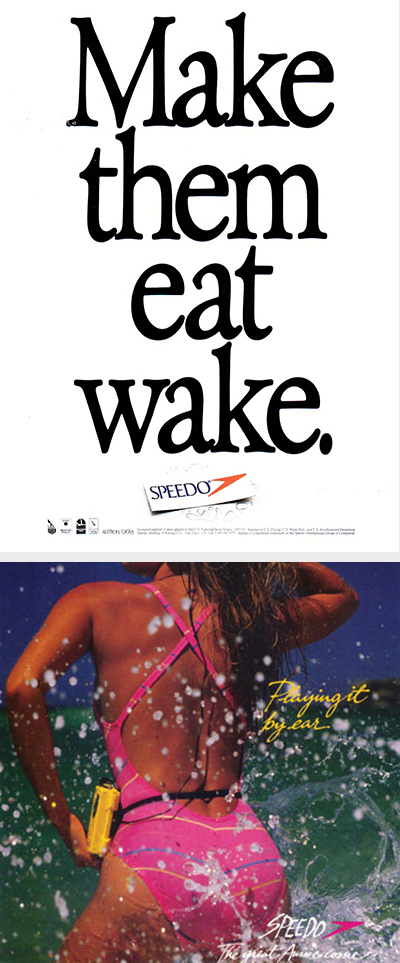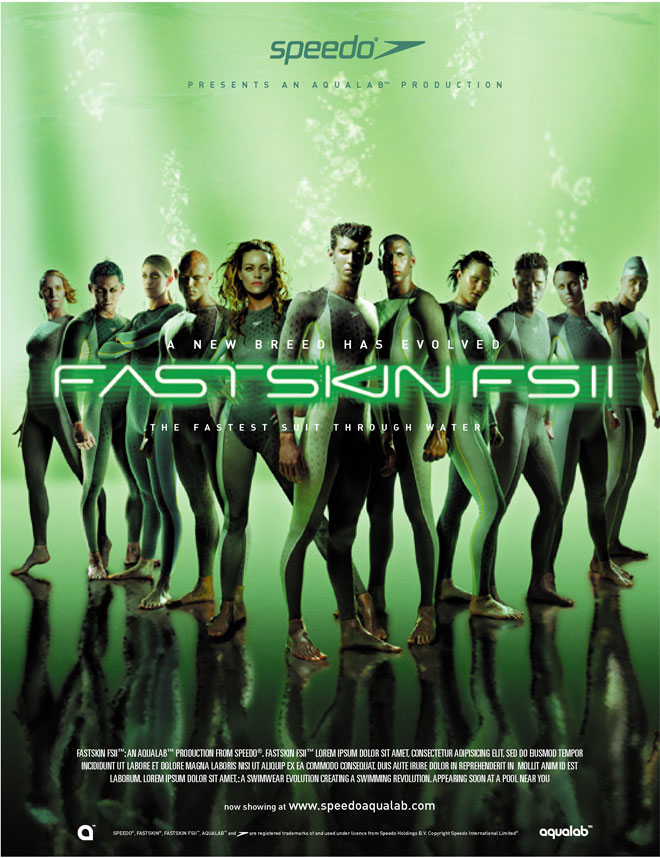About Us
Brand Ethos
Speedo®, the world’s leading swimwear brand, is passionate about life in and around the water. From learn to swim, swimming for fitness to competition swimming, our mission is to inspire people to swim and we aim to do that by encouraging healthy activity of swimming. Born in 1928 on and around Bondi Australia, Speedo has natural affinities with the beach and the pool. We have swimwear and equipment for people of all ages to do all sorts of water activities.

The Origins
Speedo® originated in 1914 under the brand name 'Fortitude', which was taken from the motto on the clan MacRae crest. It didn't become known by its now famous brand name until 1928. The company was started by a young Scot called Alexander MacRae, who migrated to Australia in 1910, and set up an underwear manufacture business called MacRae Hosiery manufacturers. In response to the growing beach culture in Australia, MacRae quickly expanded his operations to include swimwear and changed the company name to MacRae Knitting Mills.
Creating a Classic
During the 1920's the swimwear market grew rapidly, thanks to the acceptance of swimming as a sport and a more liberal attitude towards mixed bathing.
1928: MacRae introduced the classic, figure-hugging "Racerback" costume, which permitted greater freedom of movement, allowing wearers to swim faster. This inspired staff member Captain Parsons to coin the slogan 'Speed on in your Speedos' and the Speedo name was born in 1928.
1929: By this year the first Speedo swimsuits were being produced. The newly-named brand soon established itself in the hearts and minds of the swimmers and the general public, thanks in part to Swedish swimmer Arne Borg, who set a world record in Speedo swimwear.
Style and Performance
Swimwear fashions changed constantly throughout the 1930's, and Speedo products began to make the headlines for their style and performance.
1932: At the Los Angeles Olympic Games, Australian Claire Dennis took gold in the 200m breaststroke, but caused controversy in her Speedo swimsuit that "showed too much shoulder".
1934 – 1935: Americans David Armbruster and Jack Sieg invent the double over-the-water arm recovery and dolphin kick respectively, forming the ‘butterfly’.
1935: First topless men’s swimsuits are worn in America
1936: Four years later, the 1936 Berlin Games saw an Australian Men's swim team all wearing Speedo, including a daring, bare-chested swimming shorts design. Alexander McRae also formed strong links with the Surf Life Saving Association, which continues up to the current day.

War and a 2-Piece
The Second World War saw the brand dedicate over 90% of its capacity to supplying vital equipment to the armed forces. Such as: knitwear, underwear, mosquito nets and signal flags.
1946: The bikini is invented in Paris. After the war, Speedo quickly re-established itself, even opening a new factory to cope with increased demand for swimsuits - spearheaded by the bikini. Two-piece swimsuits for women had first appeared just before the war, but were not yet commonly regarded as decent - in fact, the Speedo bikini was banned by Australian beach inspectors! Speedo continued to dominate competitive swimming, with an increasing number of athletes choosing to endorse the Speedo brand.
Shore to Shore Expansion
1951: The foundations for expansion were laid in 1951 when Speedo Knitting Mills (Holdings) Ltd was incorporated and became a publicly traded company on the Sydney Stock exchange.
1954: Speedo’s relationship with the lifesaving community leads to the creation of a brand new style of men’s swimwear – the Speedo Watershort.
1956: At the 1956 Melbourne Olympic Games, Speedo’s sponsorship of the entire Australian team transformed Speedo into a world famous brand when the team swept the board with 8 gold medals.
1957: Nylon swimwear marks another fabric first for Speedo. An established pioneer of swimwear innovations, Speedo launches a swimsuit in the new wonder fabric, Nylon.
1959: Speedo began exporting to the USA in 1959, and formed a new International Division to monitor the New Zealand, Japanese and South African markets. Speedo also moved into Europe, buying a 30% share of Robert Shaw and Company Ltd. in Nottingham, England.
The Sky’s the Limit
The global growth of the brand continued during the 1960s. The Speedo (Europe) subsidiary was established in London, England, and Speedo swimwear manufacture and distribution licenses were granted to corporations in Japan and South Africa.
1968: The Mexico Olympics of 1968 saw some brilliant performances, with 27 of the 29 gold medallists wearing Speedo suits. In addition, 22 out of the 23 world records set at the Games went to swimmers wearing Speedo.

Ripple Effect
Speedo is the first company to start producing swimwear made of nylon/elastane which is still the most popular swimwear fabric today. Meanwhile, Speedo’s international presence expanded significantly. New ventures were launched in Eastern Europe, Brazil and Mexico, while the Japanese licensing deal was renewed, and Speedo Canada was established.
1972: At the Munich Olympics, a staggering 21 out of the 22 world records were broken by swimmers wearing Speedo. 52 out of the 58 nations competing in the pool were wearing Speedo.
1976: Speedo was also the official swimwear licensee for the 1976 Montreal Olympics, where 52 out of 54 countries wore their swimsuits
1977: Swimmers finally allowed to wear goggles to compete.
Faster than the Wave
A historic agreement is signed between China and Speedo, providing the Chinese team with training and equipment, allowing them to return to Olympic competition after an absence of 40 years. Companies in Belgium, the Netherlands, Iceland, Italy, Spain, Sweden and Switzerland are all licensed to have Speedo products manufactured and distributed. By now, the Speedo trademark is protected in 112 countries.
1984: Speedo remains the go-to brand for elite swimmers, with 21 gold, 20 silver and 16 bronze Olympic medals going to Speedo athletes.

On the Shoulders of Giants
Speedo International Ltd. The Pentland Group also took ownership of Speedo in this decade.
1992: Speedo’s reputation for innovation continues with the new S2000 suit, designed to reduce drag by 15% compared to conventional swimwear fabric. 53% of all swimming medals at the 1992 Barcelona Olympics are won by swimmers wearing the newly-launched suit.
1994: Speedo launched Endurance, the world’s first chlorine resistant fabric.
1996: Speedo launched AQUABLADE 8% lower surface resistance than S2000. At the Atlanta Olympics 77% of all swimming medals won were worn by swimmers competing in Speedo AQUABLADE swimsuits.

Unleash Confidence
Speedo launches the pioneering FASTSKIN® swimsuit. Inspired by shark skin, it proves a hit with world-class athletes, including Michael Phelps. 2000: At the Sydney 2000 Olympics, 13 of the 15 World Records and 83% of all swimming medals are won by swimmers wearing FASTSKIN suits.
2000: TraithELITE, the first triathlon collection launches. Simon Whitfield wins gold wearing Speedo TriathELITE at Sydney 200, as triathlon is contested at the Olympics for the very first time.
2003: Speedo celebrates its 75th birthday. Speedo commissions fashion designer Melissa Odabash to design a limited edition anniversary collection and is modelled on high profile names including Jerry Hall, Naomi Campbell and Yasmin Le Bon.
2004: Speedo launches FASTSKIN® FSII - an evolution of FAST-SKIN, which reduces passive drag by up to 4%. At the 2004 Athens Olympics Michael Phelps makes history in FASTSKIN FSII by becoming the first ever swimmer to win 8 medals. More swimmers in Athens wore Speedo than all of the other brands put together.
2005: Speedo supports the World Swim Against Malaria Foundation. Speedo begins a long-standing relationship supporting malaria charity World Swim Against Malaria Foundation.
2005: Speedo collaborates with fashion label Comme des Garcons.
2007: The Fastskin legacy continues with the launch of Fastskin FS-PRO - the fastest and most powerful lightweight suit on the market. 21 world records were broken within 6 months.
2008: In its 80th year, Speedo launched LZR Racer, the most technically advanced swimsuit in the world. Famously worn by Michael Phelps as he wins 8 golds at the Beijing Olympics. 2009: Upcoming FINA rule changes herald a new LZR Racer generation. Speedo’s FINA-compliant LZR Racer Elite, LZR Racer Pro and LZR Racer Comp launch, catering for grass roots to elite-level swimmers.
2010: Speedo unveils its new triathlon specific range, TriathELITE.
2012: More swimmers at the London Olympic Games wear Speedo than all other brands combined.
2012: Speedo introduces its latest swimwear innovation with the launch of the Speedo Fastskin Racing System - a collection of caps, goggles and suits engineered to work together to achieve the ideal swimming form.
2013: Wearing Speedo, Michael Phelps wins his 22nd medal, becoming the most decorated Olympian of all times. All of Michael Phelps’ Olympic medals between 2004-2012 were won whilst wearing Speedo suits.
2013: Speedo celebrates its 85th Anniversary and launches ‘Get Speedo Fit’, a new campaign aimed at helping people to reach their optimum fitness through swimming. The latest addition to the Speedo Fastskin Racing System, the Speedo Fastskin LZR Racer Elite 2 is launched. The reconfigured suit offers 40% more durability in water repellency, together with a range of bright new colourways.
2014: Speedo launches its first body positioning swimwear range, designed to enhance technique and help swimmers achieve their fitness goals.
2015: Fastskin LZR Racer X is launched, engineered to help swimmers feel their fastest and is Speedo’s most intuitive and empowering collection of competitive swimwear yet.
